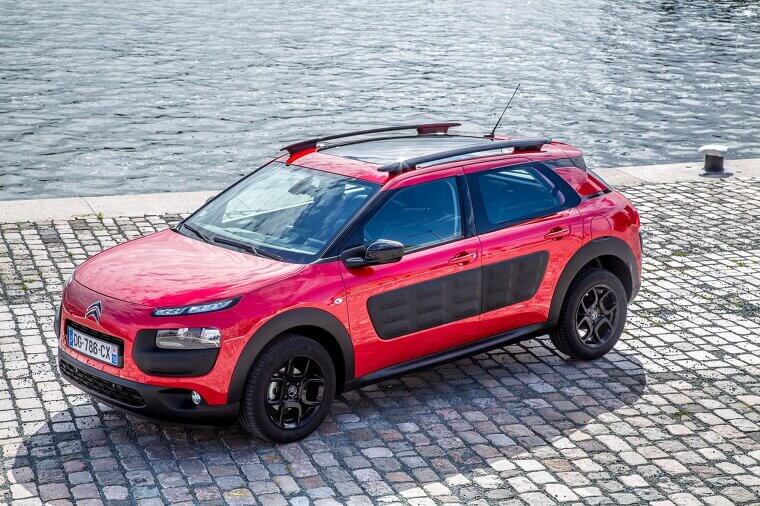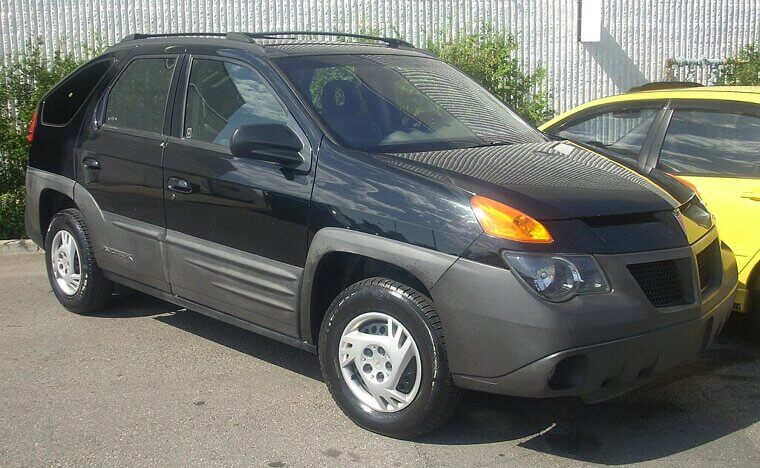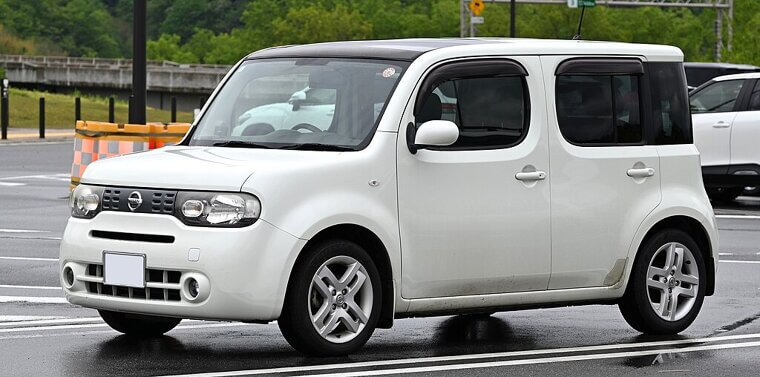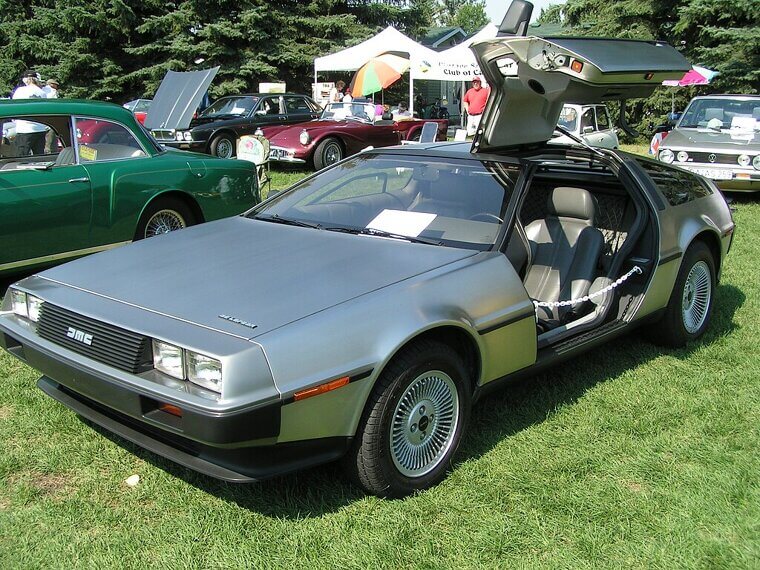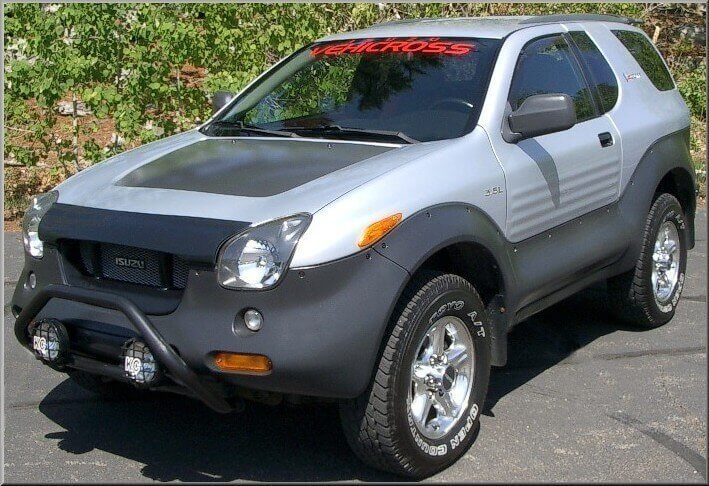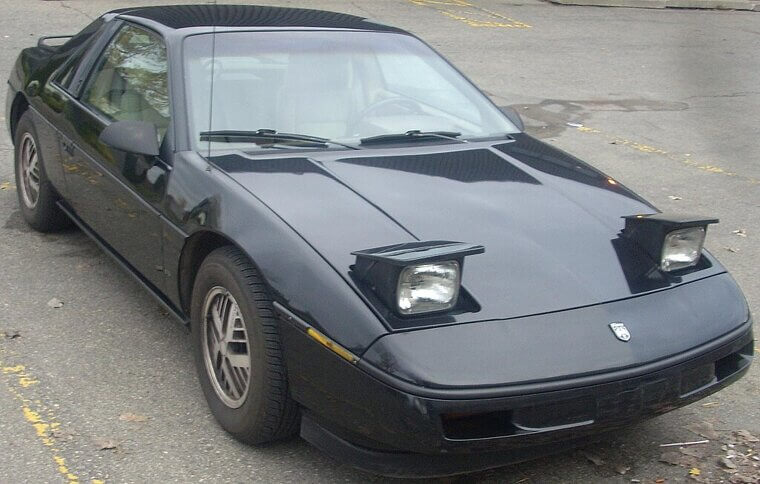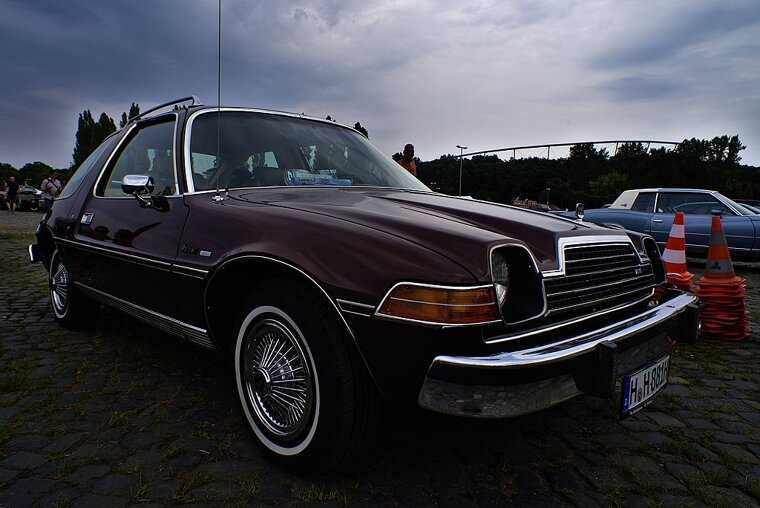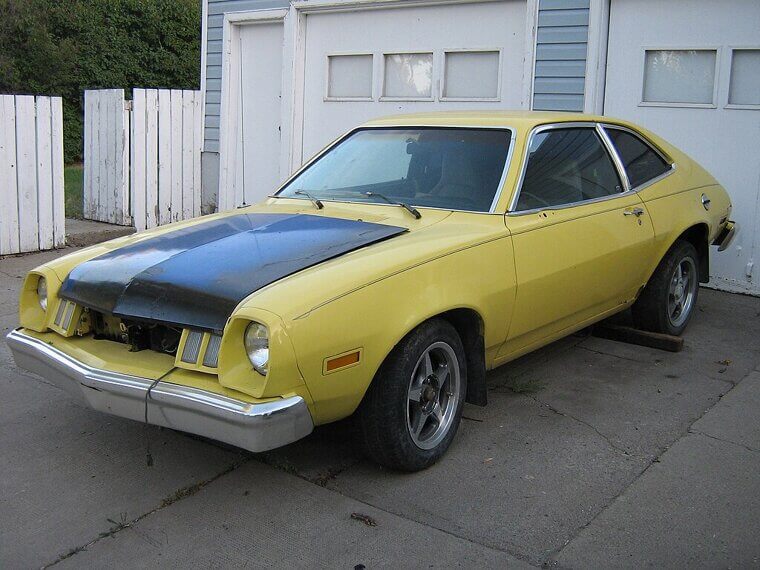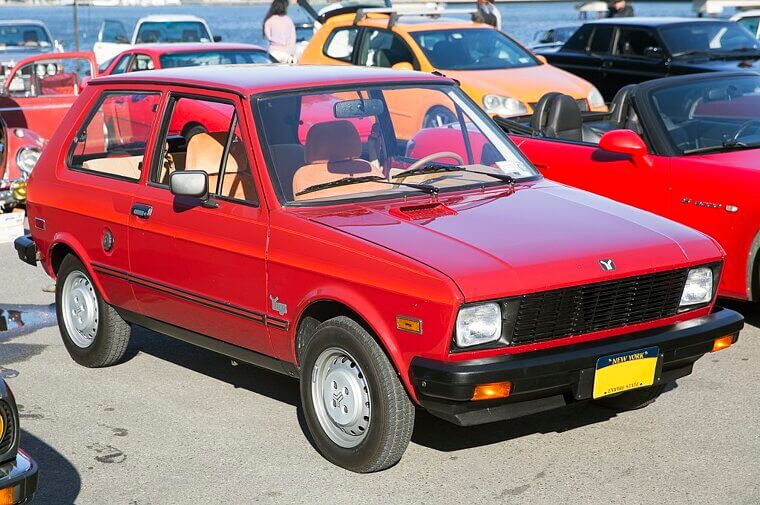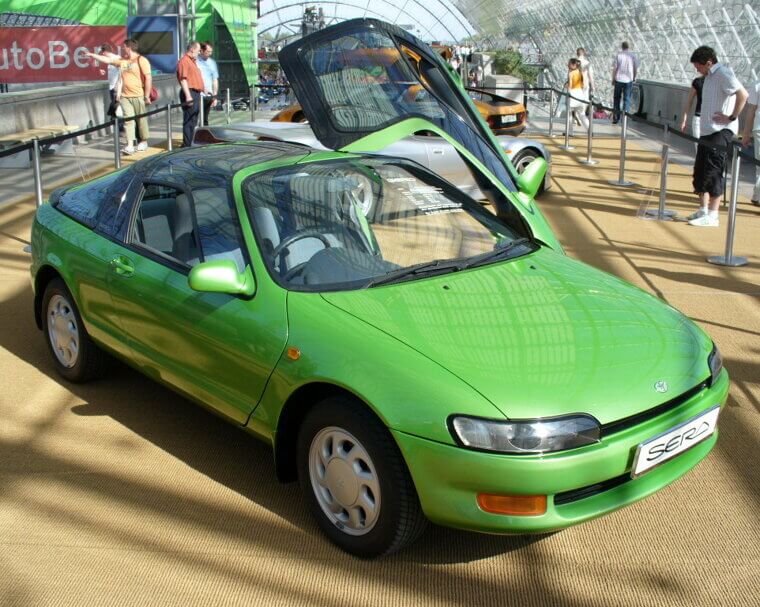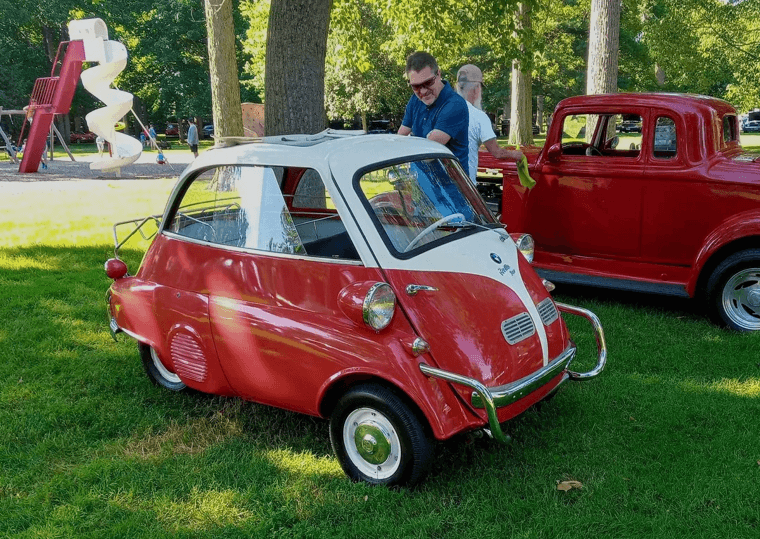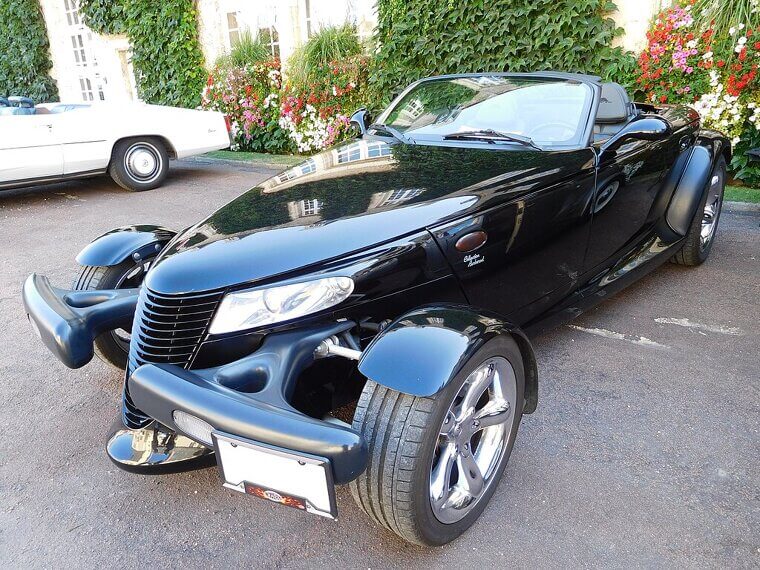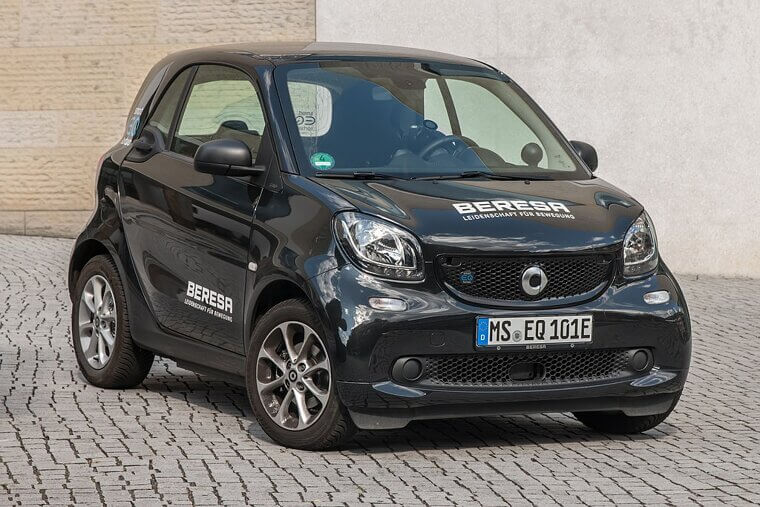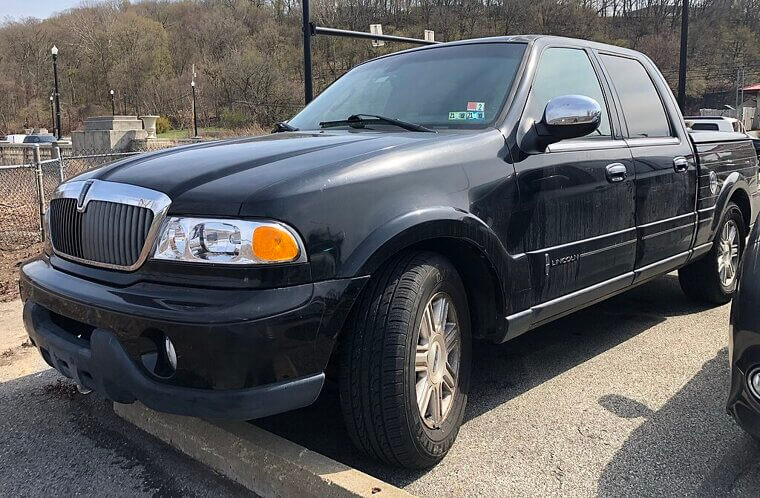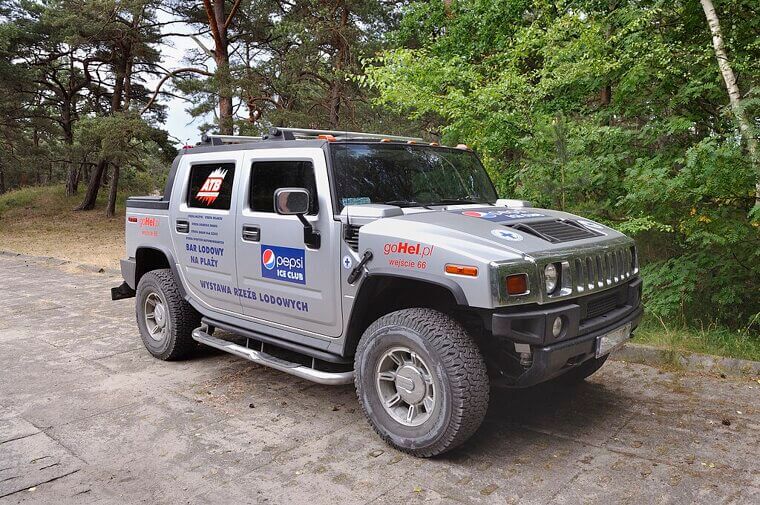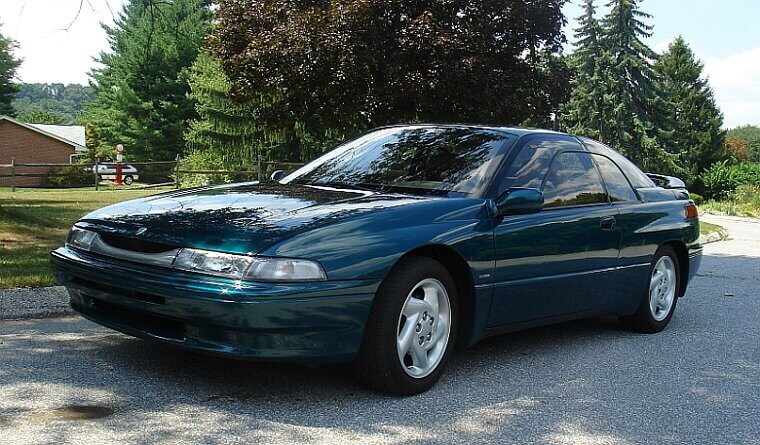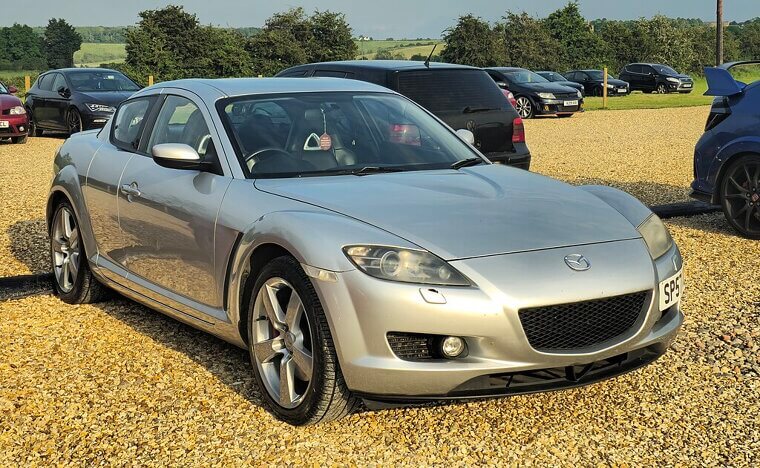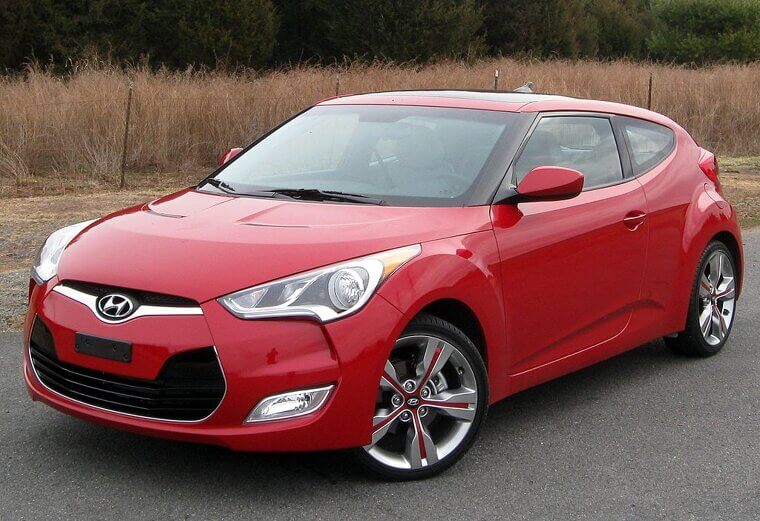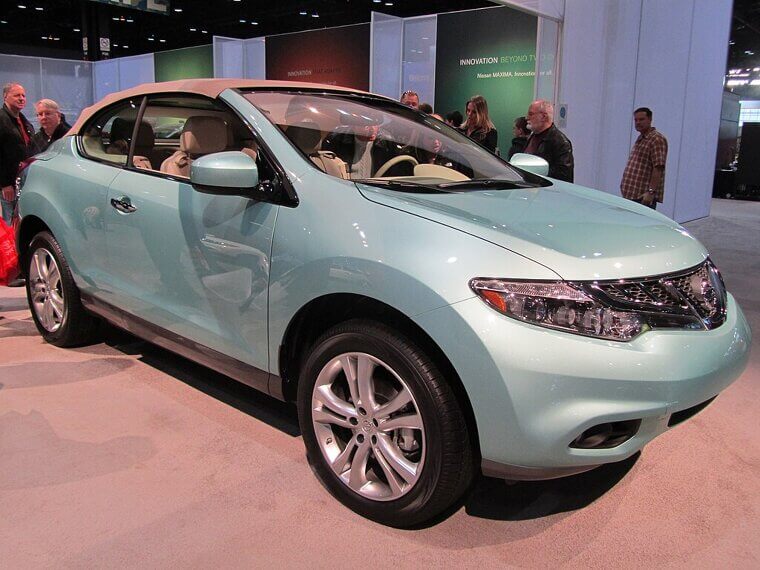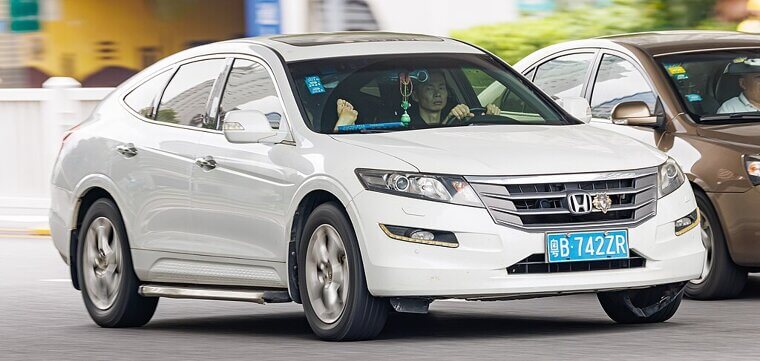Citroën C4 Cactus (2014–2020)
The C4 Cactus had squishy “airbumps” on the sides, meant to prevent dings. Cool in theory, odd in reality. Buyers loved the boldness, then regretted realizing they owned a car covered in bubble wrap. Quirky and French to the core, it became a conversation starter no one wanted to buy second-hand.
Pontiac Aztek (2001–2005)
The Aztek was supposed to be bold, adventurous, and futuristic. Instead, it became shorthand for “what were they thinking?” Owners loved its camping-friendly features but quickly realized they were driving around in a plastic clamshell with four wheels. It’s remembered fondly by Breaking Bad fans, but not its buyers.
Nissan Cube (2009–2014 in U. S. )
The Cube was a charmingly boxy, marshmallow of a car. Its asymmetrical rear window screamed “quirky!” until resale time, when buyers screamed, “no thanks!” Owners regretted realizing that cute doesn’t always age well, and that their ride looked less like a car and more like an appliance.
Delorean DMC-12 (1981–1983)
It had gullwing doors and brushed stainless steel. It even starred in “Back to the Future!” But in reality, the DMC-12 was slow, heavy, and wildly unreliable. Owners discovered that while it looked futuristic, it drove like a stainless steel tractor.
Chrysler PT Cruiser (2000–2010)
When it debuted, the PT Cruiser was the cool retro kid on the block. A few years later, it was the embarrassing uncle at the cookout. Its quirky looks drew buyers, but sluggish engines, cheap interiors, and an avalanche of mockery drew only regrets.
Chevrolet HHR (2006–2011)
Chevy’s answer to the PT Cruiser resembled a cartoon hot rod drawn by a bored teenager. While its retro styling stood out, the driving experience did not. Owners often found themselves fielding more jokes than compliments, struggling with reliability issues.
Scion XB (2004–2015)
Beloved by some as a rolling Lego brick, the xB was quirky enough to earn cult status. But after the novelty wore off, owners regretted its awkward proportions and underwhelming performance. It was roomy, but so is a refrigerator, and nobody brags about their fridge’s zero-to-sixty time!
Honda Element (2003–2011)
Boxy, rugged, and designed with outdoorsy types in mind, the Element was part SUV, part dishwasher. The wipe-clean interior was genius, but its styling wasn’t universally loved. Some owners eventually realized their “quirky adventure mobile” was scaring off dates and resale buyers alike.
Suzuki X-90 (1995–1997)
Was it an SUV? A coupe? A toy? Even Suzuki didn’t seem sure. The two-seat X-90 looked like an accidentally street legal clown car. Owners who bought into the cuteness quickly regretted its tiny cabin, sluggish power, and the fact that strangers couldn’t stop laughing at it.
Isuzu VehiCROSS (1997–2001)
The VehiCROSS looked like it belonged in a sci-fi movie, complete with weird cladding and futuristic curves. Unfortunately, the future also held terrible sales numbers and impractical quirks. Owners loved the attention, but hated the repair bills. It was less “daily driver” and more “fashion accessory with four-wheel drive.”
Pontiac Fiero (1984–1988)
Pontiac promised an affordable mid-engine sports car, and on paper, the Fiero looked incredible. In practice? Fires. Lots of fires. The Fiero looked fast even when parked, but many owners regretted discovering the biggest thrill wasn’t driving it; it was escaping the driver’s seat before the engine caught fire.
AMC Pacer (1975–1980)
Round, bubbly, and unapologetically different, The Pacer also looked like a goldfish bowl on wheels. While “Wayne’s World” made it iconic, owners found the reality less entertaining - its visibility was great, but the fuel economy wasn’t, and the weird proportions turned heads for all the wrong reasons.
Ford Pinto (1971–1980)
The Pinto looked like a plucky little compact and operated like a rolling firework. Its rear-mounted fuel tank had a bad habit of turning fender benders into Michael Bay explosions. Many buyers regretted learning the hard way that “cheap and cheerful” sometimes meant “cheap and flammable.”
Yugo GV (1985–1992 in U. S. )
The Yugo lured people in with its bargain price tag. Unfortunately sometimes you get what you pay for, and owners soon regretted having a car that broke down if you looked at it funny. It wasn’t quirky; it was just the automotive equivalent of a prank.
Toyota Sera (1990–1996, Japan-Only)
With butterfly doors that made owners feel like rockstars, the Sera looked like a spaceship - until the maintenance bills hit. Importing one was a flex, but drivers soon realized their futuristic toy was underpowered and impractical.
BMW Isetta (1955–1962)
The Isetta was essentially a scooter wearing a bubble car costume. Its single front door meant the entire dashboard opened with you. It was adorable, but impractical. Owners often regretted learning that merging onto highways was less “quirky fun” and more “near-death experience.”
Renault Avantime (2001–2003)
Part minivan, part coupe, the Avantime looked like something an architect doodled after three espressos. Owners admired the bold styling… until they tried to resell it. With just two years of production, the Avantime proved that quirky and confusing often go hand in hand.
Fiat Multipla (1998–2010)
With its frog-like double headlights, the Multipla was less a car and more an amphibian impersonator. Inside, it was spacious and clever, but outside, it looked like someone designed it in the dark. Buyers quickly regretted becoming the neighborhood’s punchline.
Mitsubishi Eclipse Cross (2017–present)
Mitsubishi gave us a sporty name and then attached it to… this. With its weird bisected rear window and awkward stance, it looked like a crossover trying to cosplay as a sports car. Owners loved the idea but often regretted the underwhelming driving experience.
Volkswagen New Beetle (1997–2011)
It was cute, bubbly, and came with a built-in flower vase. Buyers swooned at the nostalgia until reality hit. Cramped interiors, limited cargo space, and a “cute car tax” at service shops left many Beetle owners regretting that their quirky bug wasn’t nearly as lovable as the original.
Plymouth Prowler (1997–2002)
The Prowler looked like a factory-built hot rod, dripping with style and presence. Sadly, under the hood, it had all the muscle of a minivan. With no trunk to speak of, practicality flew out the window, too. Owners bought a showpiece, not a driver.
Smart Fortwo (1998–present)
The Smart Fortwo was perfect for city parking… if your city was a dollhouse. Owners adored its cuteness, but soon regretted realizing it shook like a blender on highways and had the crash safety of a soda can.
Lincoln Blackwood (2002)
Luxury pickup or pickup parody? The Lincoln Blackwood looked like a tuxedoed F-150, complete with a carpet-lined bed. Unfortunately, it couldn’t haul much besides groceries. Buyers soon regretted paying luxury money for a truck allergic to actual truck duties.
Hummer H2 (2002–2009)
It was big, bold, and screamed “look at me.” Owners loved the H2’s military chic until they realized their gas bill rivaled a mortgage payment. Between parking struggles and eco-criticism, drivers discovered their quirky statement car doubled as a social scarlet letter.
Chevrolet SSR (2003–2006)
Chevy dreamed up a convertible retro truck and called it the SSR. It looked like a toy Hot Wheels car brought to life. Unfortunately, buyers soon learned it drove like a truck, not a sports car, and the tiny bed held about two grocery bags. Quirky? Yes. Useful? Nope.
Saturn Ion (2003–2007)
With its funky plastic panels and center-mounted gauge cluster, the Ion was meant to stand out. Sadly, “quirky” turned into “cheap-feeling.” Owners regretted discovering interiors that rattled like maracas and build quality that inspired zero confidence. It wasn’t just quirky; it was the beginning of Saturn’s slow funeral march.
Subaru SVX (1991–1997)
The SVX’s unusual “window-within-a-window” design looked futuristic and cool, but living with it wasn’t fun. The unusual glass fogged up, the car guzzled fuel, and repairs cost a small fortune. Owners adored the styling until they realized they’d bought a fragile diva that loved drama more than driving.
Mazda RX-8 (2003–2012)
The RX-8’s hidden rear doors and sleek styling whispered “sporty sophistication.” Its rotary engine shouted “constant maintenance!” Owners loved its smooth ride, until apex seals failed and oil disappeared faster than gas station snacks. Buyers often regretted investing in a sports car that doubled as a money pit.
Hyundai Veloster (2011–2017)
With three doors on one side and two on the other, the Veloster screamed originality. But owners discovered fun styling didn’t equal fun driving. Its performance was lukewarm, and rear passengers cursed the weird door layout. It was compromised inside; many drivers regretted choosing style over substance.
Mercury Cougar (1999–2002)
Reborn as a “sporty coupe,” the Cougar ditched its muscle car roots for funky, rounded styling. Buyers hoping for bite were disappointed. Underpowered, oddly proportioned, and plagued with quality issues, the Cougar was declawed. Many regretted falling for the styling bait-and-switch.
Nissan Murano CrossCabriolet (2011–2014)
The world’s first convertible SUV seemed daring. In practice, it looked like a Murano had been decapitated in a freak accident. Owners got attention, but not the good kind! Odd styling couldn’t hide its terrible visibility, high price, and awkward proportions. Regret set in the moment the roof went down.
Cadillac Cimarron (1982–1988)
Cadillac tried to woo young buyers with this “luxury” sedan; too bad it was just a dressed-up Chevy Cavalier with leather seats. Owners found their prestige badge came with zero prestige performance. The Cimarron remains a cautionary tale: sometimes you can polish a car, but it’s still a Cavalier.
Chrysler Crossfire (2004–2008)
The Crossfire looked sharp, with a dramatic crease down the middle that made it stand out. Sadly, that crease didn’t extend to driving excitement. Owners regretted its cramped interior, poor handling, and questionable reliability. Stylish on the outside, disappointing on the inside… It was a blind date gone wrong.
Honda Crosstour (2010–2015)
Was it a wagon? A crossover? A stretched Accord in disguise? Who knew. Owners bought in for its unusual shape, then regretted the weird blind spots, poor cargo space, and lukewarm styling. It was weird, yes, but also proof that not every mash-up deserves to leave the design studio.
Chevrolet Corvair (1960–1969)
The Corvair was sleek, stylish, and innovative with its rear engine. Unfortunately, it was also unstable enough to star in Ralph Nader’s “Unsafe at Any Speed.” Owners discovered that “quirky handling” was code for “sketchy at best.” Regret followed closely behind (sometimes in the form of a tow truck).

